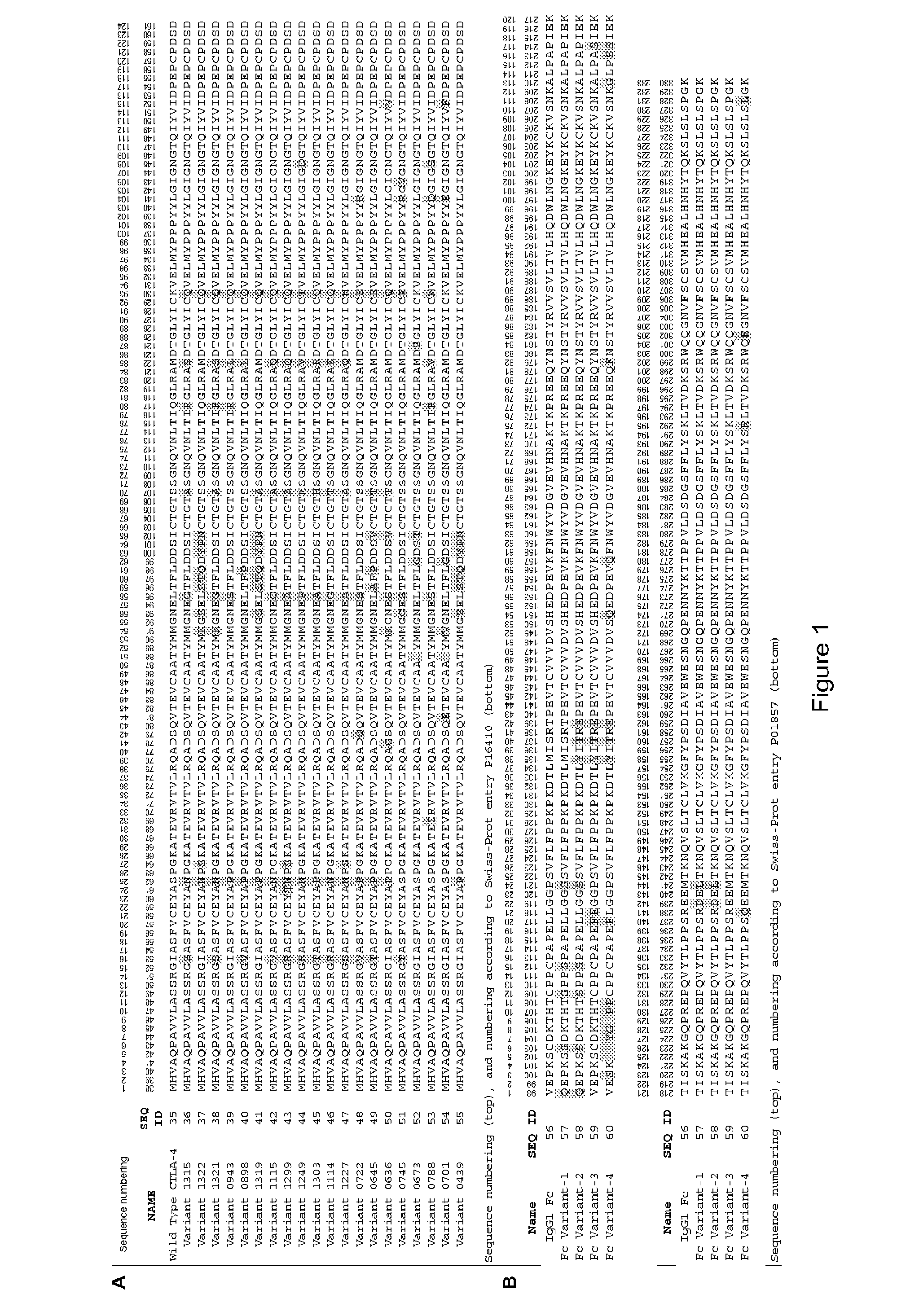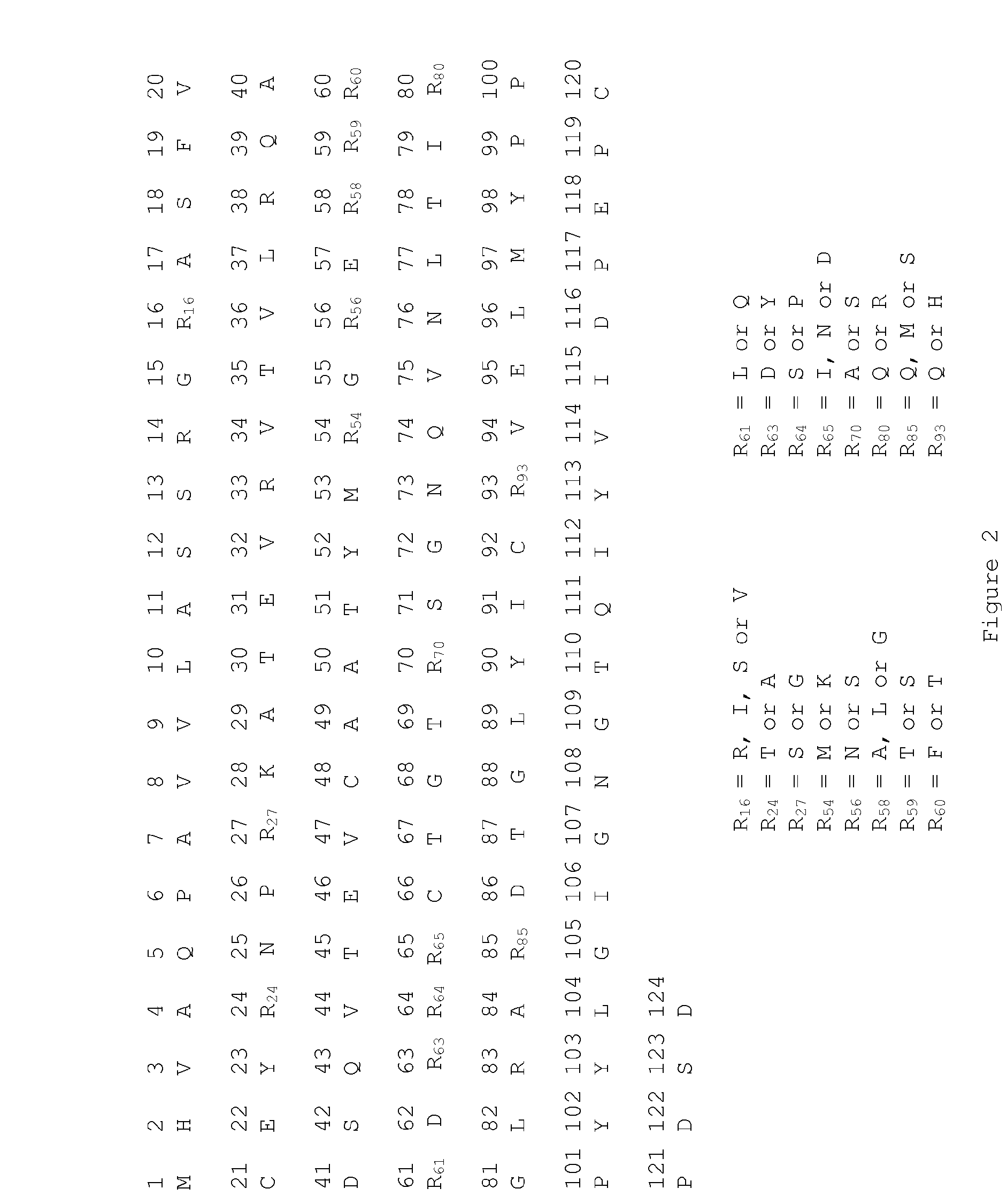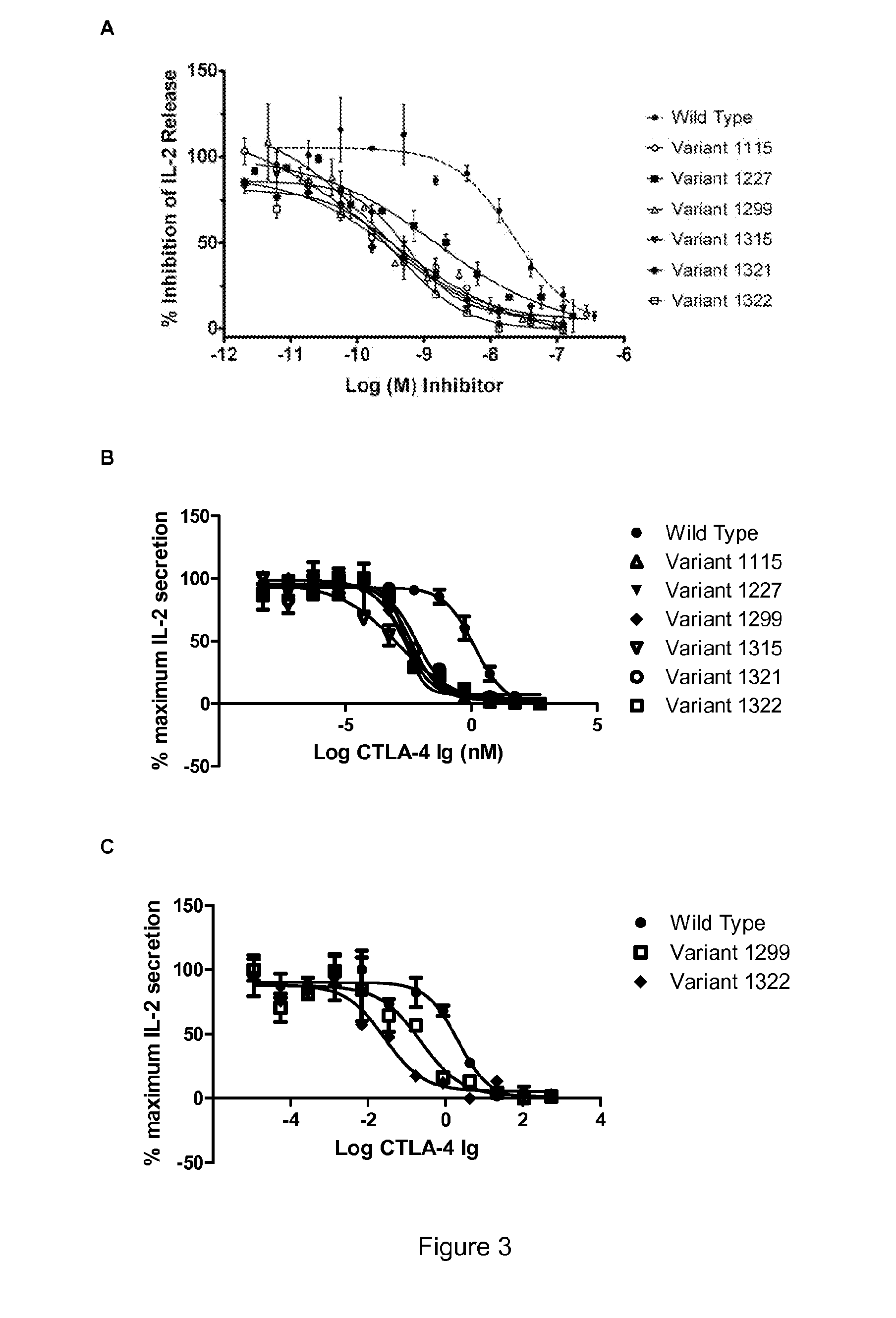CTLA-4 Variants
a cytotoxic tlymphocyte and variant technology, applied in the field of cytotoxic tlymphocyte antigen 4, can solve the problems of self-demonstrating limited efficacy against transplant rejection, and achieve the effects of improving properties, higher affinity for cd80 and/or cd86, and high potency
- Summary
- Abstract
- Description
- Claims
- Application Information
AI Technical Summary
Benefits of technology
Problems solved by technology
Method used
Image
Examples
example 1
Construction of a Library of CTLA-4 Variants and Ribosome Display Selection for Improved Potency and Stability
[0262]Ribosome display was performed on a monomeric human CTLA-4 domain, corresponding to Swiss-Prot entry P16410, residues 38-161 of the extracellular domain, with no Fc region appended. This sequence (SEQ ID NO: 35) is also referred to as wild type CTLA-4. The CTLA-4 ribosome display construct was obtained by cloning the required portion of the human CTLA-4 cDNA into a vector containing the 5′ and 3′ regulatory elements that are required for ribosome display (Hanes et al, Meth. Enzymol. (2000) 328:404). This construct comprises a T7 RNA polymerase promoter Sequence followed by a prokaryotic ribosome binding site (Shine-Dalgarno sequence) upstream of the CTLA-4 coding sequence. The cysteine at amino acid 120 (or position 157 according to the numbering in Swiss-Prot entry P16410) in the dimerisation interface of human CTLA-4 was mutated to a serine to prevent dimerisation of...
example 2
Expression of CTLA-4 Wild Type and Variants as Fc Fusion Proteins
[0269]Variant CTLA-4 genes from the ribosome display selections were cloned into the vector pEU7.1. This vector allows for the expression of the CTLA-4 gene as an in-frame fusion with an IgG1 Fc region (SEQ ID NO: 56). The ribosome display outputs were PCR amplified and cloned into pEU7.1 before transformation into E. coli DH5-alpha cells. The oligonucleotides used for the PCR cloning were also designed to revert the serine at position 120 (residue 157 according to the numbering in Swiss-Prot entry P16410) back to the wild type amino acid cysteine. Following sequencing of individual transformants, a total of over 1,000 variants with unique CTLA-4 amino acid sequences were selected for protein expression. In batches of 88 variants, the encoding plasmid DNA was purified following the supplier protocols (Qiagen) and quantified by spectrophotometry at 260 nm so that the DNA concentration could be used to calculate the corr...
example 3
Biological Activity of CTLA-4 Variants in a Raji (B-Cell) and Jurkat (T-Cell) Dual Cell Assay
[0273]The screening strategy described here included measurement of the biological activity of over 1,000 CTLA-4 variants, expressed with an Fc fusion partner, in an in vitro T-cell stimulation assay. CTLA-4 variants from all the different mutagenesis strategies (including error-prone PCR, targeted mutagenesis, hotspot recombination and rational recombination) were tested for biological activity and ranked according to their biological activity relative to the wild type CTLA-4 (SEQ ID NO: 35), also expressed in Fc fusion format.
[0274]To determine the biological activity of CTLA-4 variants, samples were added to a dual cell assay consisting of Raji (B-cell) and Jurkat (T-cell) cells. The interaction of CD28, expressed by Jurkat cells, with CD80 (B7-1) and CD86 (B7-2) ligands expressed on Raji cells, combined with a co-activation signal for the T-cell receptor (such as PHA (Phytohemagglutinin)...
PUM
| Property | Measurement | Unit |
|---|---|---|
| Fraction | aaaaa | aaaaa |
| Fraction | aaaaa | aaaaa |
| Fraction | aaaaa | aaaaa |
Abstract
Description
Claims
Application Information
 Login to View More
Login to View More - R&D
- Intellectual Property
- Life Sciences
- Materials
- Tech Scout
- Unparalleled Data Quality
- Higher Quality Content
- 60% Fewer Hallucinations
Browse by: Latest US Patents, China's latest patents, Technical Efficacy Thesaurus, Application Domain, Technology Topic, Popular Technical Reports.
© 2025 PatSnap. All rights reserved.Legal|Privacy policy|Modern Slavery Act Transparency Statement|Sitemap|About US| Contact US: help@patsnap.com



